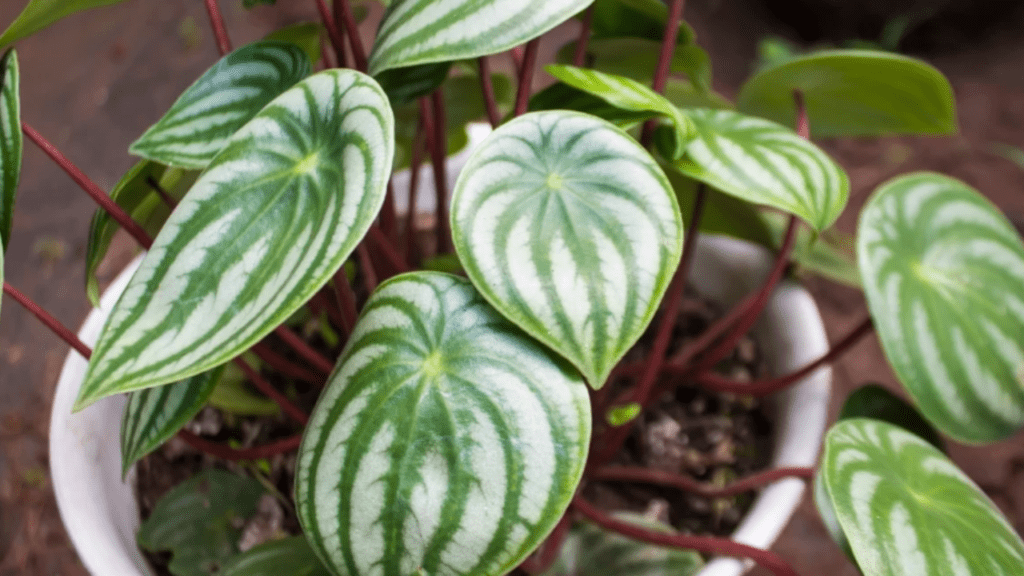
Watermelon Peperomia Care: Essential Tips for Healthy Growth
Watermelon Peperomia, known for its striking leaves that resemble the rind of a watermelon, is a popular houseplant choice for many plant enthusiasts. Proper Watermelon Peperomia care is crucial to keep this plant thriving and to maintain its vibrant appearance. In this guide, we’ll cover everything you need to know about caring for your Watermelon Peperomia, from watering and lighting to propagation and pest control.
Watermelon Peperomia is a stunning houseplant that is prized for its vibrant and unique foliage. To ensure that it stays healthy and thrives, it’s important to provide it with proper care. Watermelon Peperomia plants thrive in bright, indirect light. Avoid placing them in direct sunlight, as this can scorch their leaves. In terms of watering, it’s important to keep the soil evenly moist but not waterlogged. Allow the top inch of soil to dry out before watering again. Additionally, using a well-draining potting mix and a container with drainage holes can help prevent root rot. Fertilize the plant during the growing season with a balanced liquid fertilizer to promote healthy growth. With the right care, your Watermelon Peperomia will continue to delight with its beautiful leaves.
Table of Contents
ToggleUnderstanding Watermelon Peperomia
Description and characteristics of Watermelon Peperomia (Peperomia argyreia).
The Watermelon Peperomia, also known as Peperomia argyreia, is a popular houseplant known for its striking foliage. The leaves of this plant have a unique watermelon-like pattern, with alternating stripes of dark and light green, giving it its distinctive name. This plant is relatively easy to care for and is a great option for beginners. It thrives in bright, indirect light, making it perfect for placement near a window but out of direct sunlight. It’s important to keep the soil evenly moist but not waterlogged, so allowing the top inch of soil to dry out before watering again is crucial. Using a well-draining potting mix and a container with drainage holes can help prevent root rot. Fertilize the plant during the growing season with a balanced liquid fertilizer to promote healthy growth. With the right care, your Watermelon Peperomia will continue to delight with its beautiful leaves and make for a wonderful addition to your indoor plant collection.
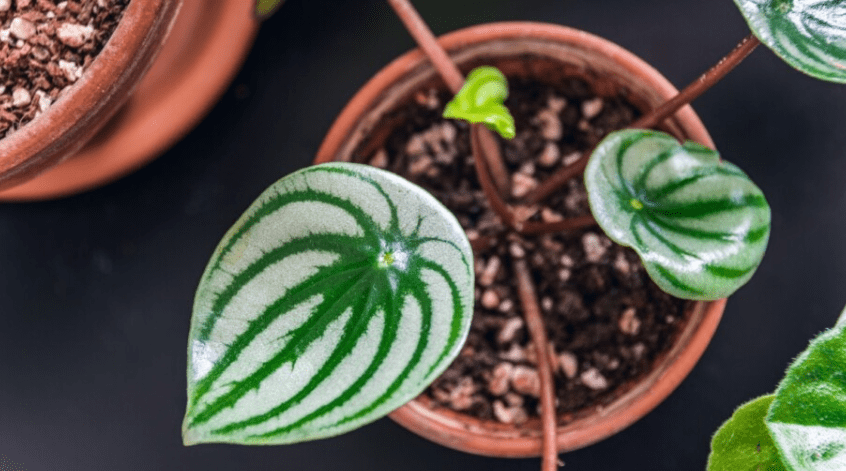
Origin and natural habitat.
The Watermelon Peperomia, also known as Peperomia argyreia, is native to South America, particularly in regions such as Brazil and Peru. It can be found growing in the wild in tropical and subtropical rainforests, where it thrives in the warm and humid climate. The plant is often found growing on the forest floor, where it receives dappled sunlight and moist soil. It has adapted to thrive in these conditions, which is why it is important to mimic its natural habitat when caring for it indoors. Providing bright, indirect light and maintaining evenly moist soil will help the plant to thrive and grow healthy leaves with its characteristic watermelon-like pattern. Understanding the origin and natural habitat of the Watermelon Peperomia can help you provide the right care and create the ideal environment for this beautiful plant.
Unique features that make it a popular houseplant.
The Watermelon Peperomia is a popular houseplant due to its unique features and beautiful appearance. It is known for its striking leaves that have a resemblance to the rind of a watermelon, with green and silver stripes and a succulent texture. This plant is easy to care for, making it a great choice for both beginner and experienced plant enthusiasts. It thrives in bright, indirect light and only requires moderate watering, making it low-maintenance and a great addition to any indoor space. Additionally, the Watermelon Peperomia is a non-toxic plant, making it safe for pets and children. Its compact size also makes it suitable for small spaces, such as desks, shelves, or windowsills. Overall, the unique appearance and ease of care make the Watermelon Peperomia a popular choice for houseplant enthusiasts.
Ideal Growing Conditions
Light Requirements
The Watermelon Peperomia is a popular houseplant due to its unique features and beautiful appearance. It is known for its striking leaves that have a resemblance to the rind of a watermelon, with green and silver stripes and a succulent texture. This plant is easy to care for, making it a great choice for both beginner and experienced plant enthusiasts. It thrives in bright, indirect light and only requires moderate watering, making it low-maintenance and a great addition to any indoor space. Additionally, the Watermelon Peperomia is a non-toxic plant, making it safe for pets and children. Its compact size also makes it suitable for small spaces, such as desks, shelves, or windowsills. Overall, the unique appearance and ease of care make the Watermelon Peperomia a popular choice for houseplant enthusiasts.
Temperature and Humidity
The ideal temperature for the Watermelon Peperomia is between 65-75 degrees Fahrenheit, making it suitable for most indoor environments. It also thrives in moderate to high humidity levels, which can be achieved by placing a humidifier nearby or misting the plant occasionally. It is important to avoid placing the plant in areas with extreme temperature fluctuations or drafts, as this can cause stress to the plant. Overall, providing a warm and humid environment will help the Watermelon Peperomia thrive and continue to display its beautiful foliage.

Watering and Soil
Watering
Watering is an important aspect of caring for the Watermelon Peperomia. It’s best to allow the top inch of soil to dry out between waterings, as overwatering can lead to root rot. This plant prefers a well-draining potting mix, such as a mix specifically designed for succulents or cacti. When watering, it’s best to water the plant thoroughly and allow any excess water to drain away. Using a watering can with a narrow spout can help to direct the water to the base of the plant and avoid getting water on the leaves, which can cause rot or mold. It’s also important to avoid getting water on the foliage, as this can lead to unsightly water spots. By following these watering and soil guidelines, you can help your Watermelon Peperomia to thrive and grow beautifully.
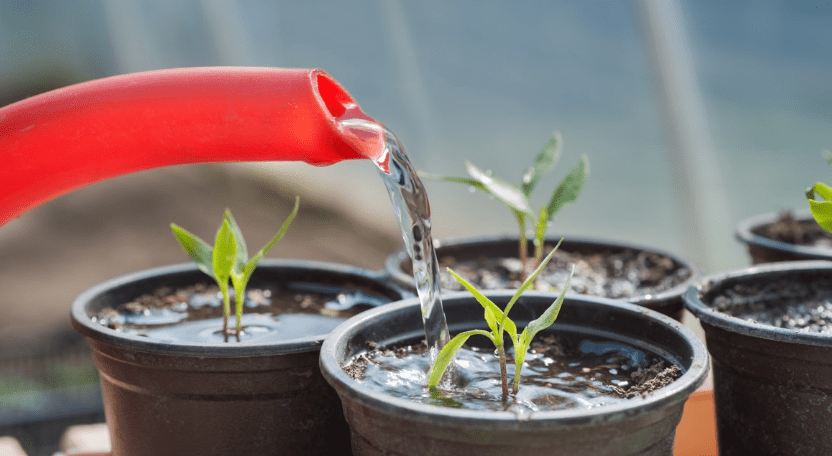
Soil
Is an important factor in the health and growth of plants, including the Watermelon Peperomia. This plant prefers a well-draining soil mix, such as a mix designed for succulents or cacti. It’s important to avoid soil that retains too much moisture, as this can lead to root rot. A soil mix that contains perlite or sand can help to improve drainage. Additionally, adding organic matter, such as compost or peat moss, can help to improve the soil structure and provide essential nutrients for the plant. When repotting the Watermelon Peperomia, it’s important to choose a pot with drainage holes to prevent water from pooling around the roots. By providing the right soil conditions, you can help your Watermelon Peperomia to thrive and stay healthy.

Fertilization
Importance of fertilization.
Fertilization is an important aspect of plant care and can greatly impact the health and growth of your Watermelon Peperomia. Fertilizing provides essential nutrients that the plant needs to thrive, such as nitrogen, phosphorus, and potassium. It’s important to choose a well-balanced, water-soluble fertilizer specifically formulated for indoor plants. When fertilizing your Watermelon Peperomia, it’s important to follow the instructions on the fertilizer packaging to avoid over-fertilization, which can be harmful to the plant. Typically, you’ll want to fertilize your plant during the growing season, which is usually in the spring and summer months. By providing the right fertilization, you can help your Watermelon Peperomia to grow beautifully and maintain its vibrant and healthy appearance.
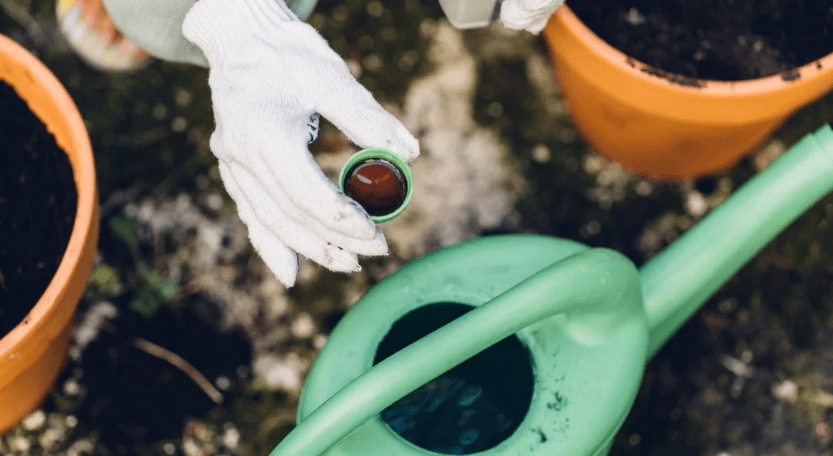
Recommended types of fertilizers and how often to use them.
Watermelon Peperomia plants require proper fertilization to thrive and stay healthy. Fertilization is crucial for providing essential nutrients like nitrogen, phosphorus, and potassium that the plant needs to grow and flourish. It’s important to choose a well-balanced, water-soluble fertilizer specifically formulated for indoor plants. Follow the instructions on the fertilizer packaging to avoid over-fertilization, which can harm the plant. Generally, it’s best to fertilize your Watermelon Peperomia during the growing season, which is typically in the spring and summer months. Using the right type of fertilizer and fertilizing at the right time will help your plant grow beautifully and maintain its vibrant and healthy appearance.
Signs of over-fertilization and how to avoid it.
Over-fertilization can be detrimental to the health of your Watermelon Peperomia plant. Signs of over-fertilization include wilting, brown leaf tips, and yellowing leaves. To avoid over-fertilization, it’s important to choose a fertilizer specifically formulated for indoor plants and follow the instructions on the packaging. It’s best to fertilize your Watermelon Peperomia during the growing season, which is typically in the spring and summer months. Be sure to water your plant before and after fertilizing to help prevent any negative effects from the fertilizer. Additionally, it’s important to monitor your plant for any signs of over-fertilization and adjust your fertilizing routine as needed to keep your Watermelon Peperomia healthy and thriving.
Pruning and Maintenance
Pruning
Is an important part of plant care, and it can help your Watermelon Peperomia plant stay healthy and grow properly. When pruning your plant, it’s important to use clean, sharp scissors or pruning shears to avoid damaging the plant. You can prune your Watermelon Peperomia to remove any dead or yellowing leaves, to shape the plant, or to encourage new growth. It’s best to prune your plant in the spring or early summer when it is in its active growing phase. When pruning, make sure to only remove a small amount of foliage at a time to avoid stressing the plant. After pruning, be sure to water your plant and give it some time to recover. By regularly pruning and maintaining your Watermelon Peperomia, you can help it stay healthy and beautiful.
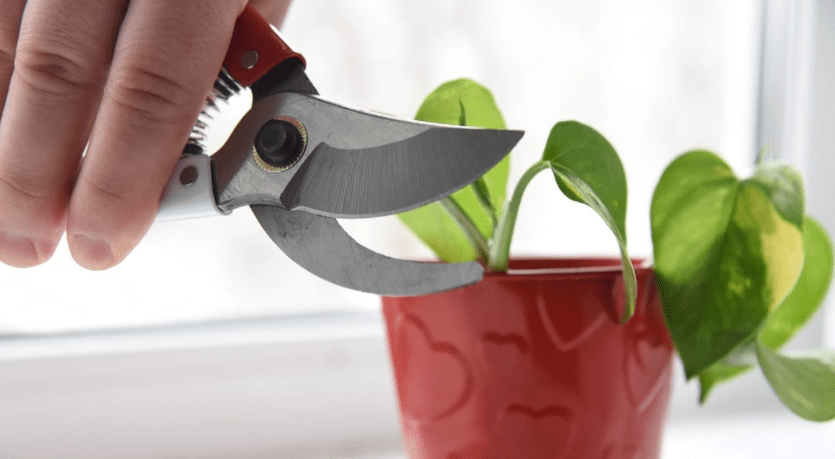
Cleaning
your Watermelon Peperomia plant is also an important part of plant care. You can gently wipe the leaves with a damp cloth to remove any dust or dirt that may have accumulated. This will not only keep your plant looking its best, but it will also help the leaves to better absorb light and nutrients. You can also regularly dust the leaves to keep them clean and healthy. Additionally, it’s important to regularly clean the pot or container that your plant is in to remove any built-up dirt or debris. Keeping your plant and its surroundings clean will help prevent pests and diseases from taking hold. By regularly pruning and cleaning your Watermelon Peperomia plant, you can ensure that it stays healthy, vibrant, and beautiful.
Propagation
Methods of Propagation
There are a few different methods of propagating your Watermelon Peperomia plant. One common method is through leaf cuttings. You can snip off a healthy leaf and place it in water or soil to encourage root growth. Another method is through stem cuttings, where you can cut a healthy stem and place it in soil to grow a new plant. Division is also a method of propagation, where you can separate the plant into smaller sections and replant them to grow new plants. Whichever method you choose, make sure to provide the right conditions for the new plants to grow, such as warmth, humidity, and proper watering. With the right care and attention, you can easily propagate your Watermelon Peperomia plant and expand your plant collection.
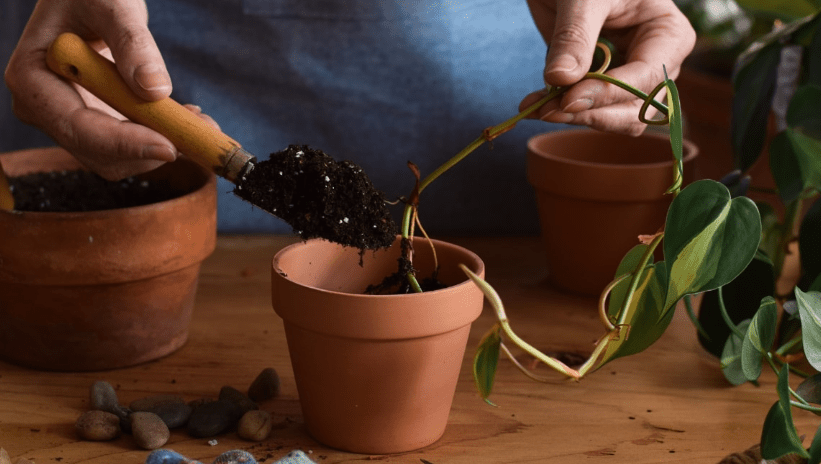
Step-by-Step Guide
Propagation of a Watermelon Peperomia plant can be done through various methods. One common method is through leaf cuttings, where you can snip off a healthy leaf and place it in water or soil to encourage root growth. Another method is through stem cuttings, where you can cut a healthy stem and place it in soil to grow a new plant. Division is also a method of propagation, where you can separate the plant into smaller sections and replant them to grow new plants. Whatever method you choose, it’s important to provide the right conditions for the new plants to grow, such as warmth, humidity, and proper watering. With the right care and attention, you can easily propagate your Watermelon Peperomia plant and expand your plant collection.
Common Problems and Solutions
Pests
Can be a common issue when propagating Watermelon Peperomia plants. Some pests like aphids and spider mites can infest the plants and cause damage. To prevent these pests, it’s important to regularly inspect your plants and keep them clean. You can use natural pest control methods like neem oil or insecticidal soap to get rid of any pests. Additionally, you can also isolate the new plants from your existing collection to prevent the spread of pests. By being proactive and taking care of your plants, you can prevent pest infestations and ensure the healthy growth of your Watermelon Peperomia plants.
Disease
Can also be a common problem when propagating Watermelon Peperomia plants. Overwatering can lead to root rot, which can cause the plant’s leaves to turn yellow and wilt. To prevent this, it’s important to let the soil dry out between waterings and ensure proper drainage. If you notice any signs of disease, such as wilting or discoloration of the leaves, it’s important to take action and adjust your watering schedule. You can also use a fungicide to treat any fungal diseases that may affect your plants. By monitoring the health of your plants and taking preventive measures, you can ensure that your Watermelon Peperomia plants remain disease-free and continue to thrive.
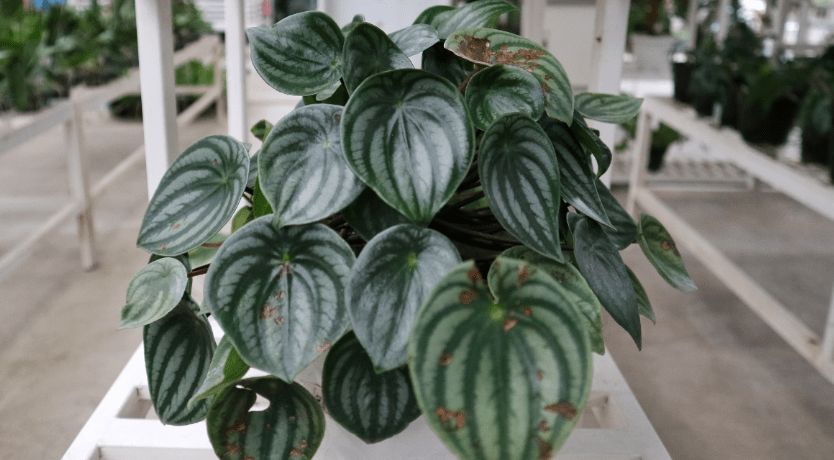
Leaf Issues
Are common concerns for plant owners, especially when it comes to Watermelon Peperomia plants. Yellowing leaves can be a sign of overwatering, while brown or black spots could indicate a fungal infection. By being proactive and taking care of your plants, you can prevent pest infestations and ensure the healthy growth of your Watermelon Peperomia plants. Overwatering can lead to root rot, which can cause the plant’s leaves to turn yellow and wilt. To prevent this, it’s important to let the soil dry out between waterings and ensure proper drainage. If you notice any signs of disease, such as wilting or discoloration of the leaves, it’s important to take action and adjust your watering schedule. You can also use a fungicide to treat any fungal diseases that may affect your plants. By monitoring the health of your plants and taking preventive measures, you can ensure that your Watermelon Peperomia plants remain disease-free and continue to thrive.
Seasonal Care
Spring and Summer
Are important times for caring for your plants, including Watermelon Peperomia. During the spring and summer, it’s important to pay attention to the needs of your plants, including watering, fertilizing, and pest control. In the spring, you can start to increase your watering as the plants start to grow more actively. It’s also a good time to repot your Watermelon Peperomia if it has outgrown its current container. During the summer months, it’s important to protect your plants from the intense heat and direct sunlight. You can place them in a location with bright, indirect light and ensure that they are kept well-watered. Fertilizing your plants during the spring and summer can also help promote healthy growth. Using a balanced fertilizer can provide the nutrients your plants need to thrive. Additionally, it’s important to keep an eye out for pests during these warmer months. Inspecting your plants regularly for any signs of pests can help prevent infestations and keep your plants healthy. By providing the proper care and attention during the spring and summer, you can help your Watermelon Peperomia plants thrive and continue to brighten up your space.
Fall and Winter
Are important times to prepare your plants for the colder months. As the temperatures drop, it’s crucial to bring your Watermelon Peperomia indoors to protect them from the cold. Place them in a location with bright, indirect light and ensure that they are kept away from drafts. During the fall and winter, it’s also important to adjust your watering schedule as the plants may need less water in the cooler weather. Be sure to monitor the soil moisture and adjust your watering frequency accordingly. Additionally, it’s a good idea to stop fertilizing your plants during this time as they are not actively growing. Keep an eye out for any signs of pests and treat them promptly to prevent any infestations. By providing the proper care and attention during the fall and winter, you can help your Watermelon Peperomia plants stay healthy and vibrant until the warmer months return.
In conclusion, proper care for your Watermelon Peperomia plant is essential for healthy growth. It’s important to provide the right amount of water, sunlight, and soil conditions to ensure that your plant thrives. By following these essential tips, you can keep your Watermelon Peperomia looking its best and enjoy its beautiful foliage for years to come.
Frequently asked questions And Answer
Watermelon peperomia should be watered when the top inch of soil is dry. This usually means watering every 1-2 weeks, depending on the humidity levels in your home.
Watermelon peperomia prefers bright, indirect light. Avoid direct sunlight as it can scorch the leaves.
It’s best to use a well-draining, aerated potting mix specifically designed for houseplants. Regular potting soil may hold too much moisture and lead to root rot.
Fertilize your watermelon peperomia every 4-6 weeks during the growing season (spring and summer) with a balanced, water-soluble fertilizer diluted to half strength.
Watermelon peperomia thrives in temperatures between 65-75°F (18-24°C). Avoid exposing it to temperatures below 50°F (10°C).
Watermelon peperomia can be propagated through leaf or stem cuttings. Simply place the cuttings in water or moist soil and wait for roots to develop.
Yes, it is normal for watermelon peperomia to produce small white flowers, especially during the growing season.
